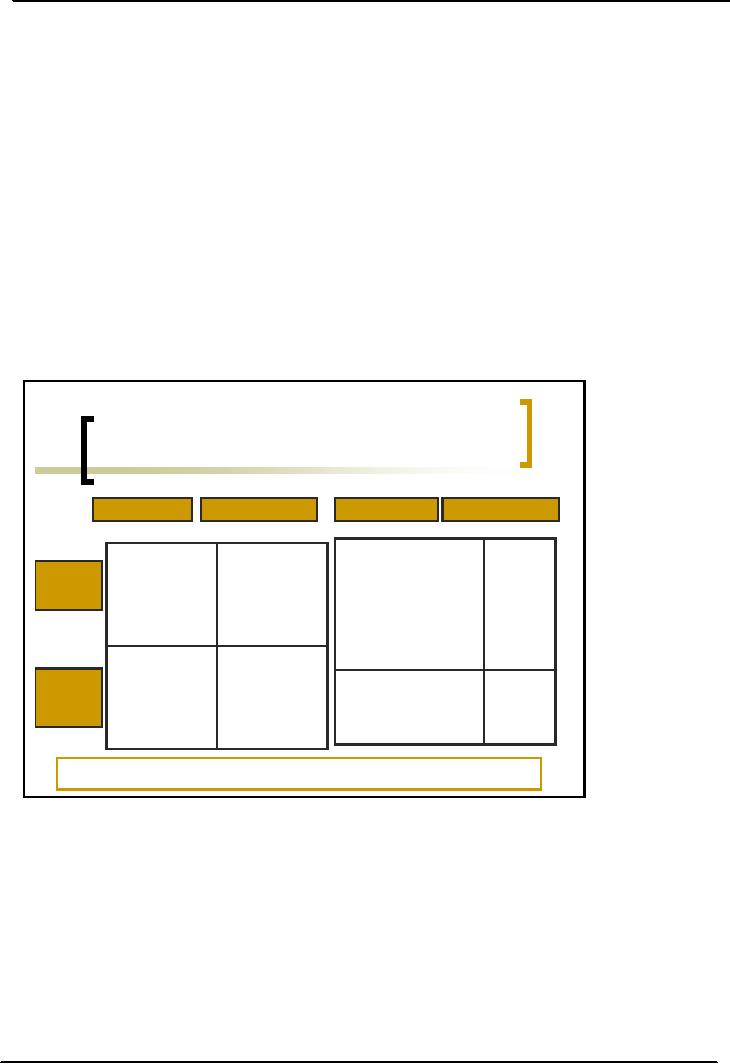 |
COUNSELING PROCESS:The Initial Session, Counselor-initiated, Advice Giving |
| << COUNSELING PROCESS:Link to the Previous Lecture |
| COUNSELING PROCESS:Transference & Counter-transference >> |

Theory
and Practice of Counseling -
PSY632
VU
Lesson
20
COUNSELING
PROCESS
Counselor
Qualities
∑
Strong
(1968) identifies 3 characteristics of
influential counselors:
o
Expert:
Expertness is the degree to which a
counselor is perceived as knowledgeable
depending
on
culture. Initially nearly all
clients like to work with
counselors who are perceived
as experts.
o
Attractive:
Attractiveness
is a function of perceived similarity
between a client and
counselor.
Counselors
can make themselves attractive by
speaking in a clear way by
using simple
sentences
and
offering appropriate disclosure.
o
Trustworthy:
This quality refers to care,
concern, sincerity, and honesty. Many
clients test the
trustworthiness
of the counselor by requesting
information, telling a secret,
asking a favour,
inconveniencing
the counselor, deprecating themselves, or
questioning the motives and
dedication
of the counselor.
∑
Okun
(1992) lists 5 important
characteristics:
o
Self-awareness
o
Honesty
o
Congruence
o
Ability
to communicate
o
Knowledge
5-Stage
Structure of Interview
∑
Rapport
& Structure
Example:
`Hello, that is what we will be
doing today'
∑
Gathering
Data & Identifying
Assets
Example:
`Tell me about yourself; what is
bothering you?'
∑
Determining
Outcomes / Goal Setting
Example:
`What you want to
achieve?'
∑
Generating
Alternative Solutions
Example:
`How can we look at the
story differently?'
∑
Generalizing
& Transferring Learning
The
learning achieved during counseling
sessions is generalized to daily
life. Example: `Will you do
it?'
The
Initial Session
There
is always an initial session. It is
during this time both the client
and the counselor are
assessing one
another
to see if the relationship will
work.
∑
It is the
initial interview when
subject of the subsequent sessions
will be discussed and
determined.
∑
There
are several skills
which
are useful during this phase
of counseling.
Client-versus
counselor-initiated Interviews
∑
Benjamin
(1987) distinguishes between
these two types of initial
interviews:
85

Theory
and Practice of Counseling -
PSY632
VU
∑
Client-initiated:
o
When
the initial interview is requested by a
client, the counselor is often unsure of
the
client's
purpose. This uncertainty may
create anxiety in the counselor,
especially if
background
information is not gathered before the
session.
o
Benjamin
advises the counselor not to
inquire initially about any
problem the client
may
have.
The client may not
have a problem in the traditional
sense of the word and may
just
be
seeking the information.
∑
Counselor-initiated:
o
Counselors
should immediately state his/her reason
for wanting to see the client. In the
case
of a school counselor, for
instance, a session might be
requested so that the
counselor
can
introduce himself or herself to the client. If the
counselor does not immediately give
a
reason
for requesting the session, the
client is kept guessing and
tension is created.
o
Manthei
(1983) advocates that
counselor's presentations about
themselves and their
functioning
be multimodal:
visual, auditory, written,
spoken and
descriptive.
Information-Oriented
First Interview
∑
Initial
interview can fulfill two
functions (Hackney & Cormier,
1994):
o
It
can be intake interview to collect
needed information
o
It
can signal the beginning of a
relationship
∑
The
intake interview is usually counselor
focused. The counselor will
respond to the client
predominantly
through the use of probes,
accents, closed questions,
and requests for
clarification.
∑
Open-- and
closed ended questions are
asked.
∑
Probes--refer
to questions which begin with
who, what, where, how, or
when.
o
Example:
`What do you plan to do to
complete your project?'
∑
Requests
for Clarification--
Asking the client for more
information.
o
Example:
`Help me understand what this relationship is
for?'
Information
Oriented Interview Format
∑
Identifying
data
∑
Presenting
problems: Both primary and
secondary
∑
Client's
current life setting
∑
Family
history
∑
Personal
history
∑
Description
of the client during interview:
client's readiness, motivation,
appearance, behavior, tension,
rate
of talking, stream of thought,
etc.
∑
Summary
and recommendations
Relationship
Oriented First Interview
When
you can take the time to
build the relationship with the client
& gather information, there
are other
skills
which you must possess
and develop. In efforts to build the
relationship:
∑
Focus
more on the client's attitudes
and emotions.
o
Summary
of Feelings.
∑
The
required skills you need include the
following:
o
Restatement/Content
Paraphrasing
86

Theory
and Practice of Counseling -
PSY632
VU
Summary
of Feelings: A simple summary
paraphrase several feelings
which have been
o
verbalized
Reflection
of Feeling: It refers to understanding of
both non-verbal and verbal
material.
o
Acknowledgement
of nonverbal behavior: You are
noting to the client what you
are seeing.
o
You
are not interpreting the
non-verbal content.
Some
Non-Helpful Behaviors
There
are several lists of
non-helpful behaviors. Most
common among them include:
∑
Advice
Giving:
o
Howevder,
Scak (1985) points out
that advice giving need
not always be
destructive.
o
For
example, 70-90% of all responses on a
crisis line are mainly
advice giving (Knowles,
1979).
∑
Lecturing:
o
Lecturing
is a disguised form of advice
giving. It sets up a power struggle
between counselor
and
client that neither
individual can win.
∑
Excessive
Questioning:
o
Excessive
questioning is a common mistake of many
counselors. Verbal interaction
with clients
needs
to include statements, observations, and
encouragers as well as questions.
When
excessive
questioning is used, the client feels as
though he or she is being interrogated
rather
than
counseled. The client has
little chance to take the
initiative and many become
guarded.
Counseling
relationships are more productive
when counselors avoid asking
more than two
questions
in a row and keep their
questions open rather than
closed.
∑
Storytelling:
Milton
Erickson told stories metaphorically
tailored to relate them to the client's
life. However,
generally
story telling is discouraged as everybody cannot
handle it skillfully.
Counseling
Goals
∑
The
counselor helps the client explore
specific areas and begin to
identify goals that the
client wants to
achieve.
Without goals, the sessions
will wander
aimlessly.
∑
Goals
within counseling help to
set the tone and direction
one travels with their
client. The counselor
gives
the client an opportunity to talk about
himself, reinforces the client's focus on
self by providing
structure,
actively listening, and helping clients
identify and clarify
goals.
∑
Goals
are the energizing fabric of daily
living but are often
elusive (Rule, 1982), such
as:
o
Unfocused
goals are too broad, or not
prioritized.
o
Unrealistic
goals are happiness,
perfection, being number one, and
self-actualization. They
have
merit
but are not easily
obtained.
o
Uncoordinated
("Really" & "seemingly
uncoordinated") are incompatible goals,
e.g., a client
who
seeks counseling but does
not wish to work on changing
is an example of an individual
with
incompatible and really uncoordinated goals.
Seemingly uncoordinated goals are
those
which
appear to be uncoordinated but in reality
are not so. Individuals
with these goals
don't
want
to take responsibility, indulge in "yes
but..." dialogue.
Goal
Guidelines (Dyer
& Vriend, 1977)
∑
Goals
are mutually agreed on by the
client and counselor.
87

Theory
and Practice of Counseling -
PSY632
VU
∑
Goals
are specific.
∑
Goals
are relevant to changing self-defeating
behavior.
∑
Goals
are achievement & success
oriented.
∑
Goals
are quantifiable &
observable
∑
Goals
are understandable & can be
restated clearly
∑
Goals
are achievement & success oriented:
Have intrinsic and extrinsic
payoff for the client
Middle
Phase: Working in a Counseling
Relationship
∑
After
relationship building (involvement and
exploration phase), counselor
moves with the client to
understanding
and action phases.
∑
The
informed clients decide how
to proceed.
∑
Johari
window is a conceptual device to
show that most of the
clients enter the counseling
relationship
with
the problem of self awareness.
The clients extend the dimensions of the
area of free activity
while
shrinking
the dimensions of the more restrictive
areas.
Wo
rking in a Co unse ling Re
latio ns hip
Middle
Phase
Know
n to self
Not
know n to self
know
n t o self
Not
know n to self
Know
n to
Area
of free
Blind
area
Area
of free acti vity
Blind
ot
hers
activity
area
Avoided/hidd
Area of
en
area
unknown
Area
of
Not
know n
activity
A
voided/hi dden area
unknown
to
ot hers
activity
Source:
Luft (1969). The Johari
window of the client
Counseling
Skills in Understanding and Action
Phase
Changing
Perceptions
Leading:
Silence, acceptance, approval
paraphrasing, reassurance,
interpretation, etc.
Multifocused
responding: Affective, cognitive
and behavioral
Accurate
empathy
Self
disclosure (Egan,
1990)
Immediacy
(relationship, here and
now)
Humour
Confrontation
88

Theory
and Practice of Counseling -
PSY632
VU
Changing
Perceptions:
There
are several ways to "lead"
the client forward in a session. They
include using silence,
acceptance,
paraphrasing,
etc. Be aware of how you
lead and where you
are going. You are working
on the client's
issues,
not your issues, or what
you
think
the client should be working
on.
Leading:
Through
the use of appropriate silence,
acceptance, approval paraphrasing,
reassurance, interpretation,
etc.
Multifocused
responding: Affective, cognitive
and behavioral
Affective
Responding: Focusing on
feelings.
Behavioral
Responses: Focusing on actions
and behaviors.
Cognitive
Response: Focusing on thoughts and
cognitions.
You
will balance these
throughout the session with a
client.
Accurate
empathy: The use of empathy
is one of the most vital elements in counseling. There
are
two types of empathy. The basic type is called primary empathy. The second level
is known as
advanced
empathy (Carkhuff, 1969).
Accurate
empathy on both levels is
achieved when counselors see
clients' world from the
clients' point of
view
and are able to communicate
this understanding back.
Self
disclosure (Egan, 1990)
Self
disclosure has generated
more than 200 studies.
Self-disclosure is making oneself known
to another
person
(the client) by revealing personal
information.
Counselor's
self-disclosure is necessary as it
relates to the therapeutic process. Too
much self-disclosure
hinders
the counseling process, while
too little of it may inhibit
the client from forming a
bond with the
counselor.
Clients are more likely to
trust counselors who disclose
personal information. Egan
pointed out
two
helpful functions of self
disclosure: modeling and developing a new
perspective.
Immediacy
(refers
to relationship during current counseling
session, here and now):
This
involves a counselor's understanding and
communicating of what is going on between the
counselor
and
client within the helping relationship.
There are 2 types:
"Relationship
immediacy" (Between client &
counselor)
"Here
& Now" immediacy focuses
on some particular
event in the
session.
Humor:
Humor
can have a positive effect on the
counseling process when used
properly.
Confrontation:
This
is not a skill at putting the
client down for doing
something wrong! This is an
invitation to the client to
look
more closely at behavior
that is not working or
interfering with growth,
change, or healthy functioning.
89
Table of Contents:
- INTRODUCTION:Counseling Journals, Definitions of Counseling
- HISTORICAL BACKGROUND COUNSELING & PSYCHOTHERAPY
- HISTORICAL BACKGROUND 1900-1909:Frank Parson, Psychopathic Hospitals
- HISTORICAL BACKGROUND:Recent Trends in Counseling
- GOALS & ACTIVITIES GOALS OF COUNSELING:Facilitating Behavior Change
- ETHICAL & LEGAL ISSUES IN COUNSELING:Development of Codes
- ETHICAL & LEGAL ISSUES IN COUNSELING:Keeping Relationships Professional
- EFFECTIVE COUNSELOR:Personal Characteristics Model
- EFFECTIVE COUNSELOR:Humanism, People Orientation, Intellectual Curiosity
- EFFECTIVE COUNSELOR:Cultural Bias in Theory and Practice, Stress and Burnout
- COUNSELING SKILLS:Microskills, Body Language & Movement, Paralinguistics
- COUNSELING SKILLS COUNSELORíS NONVERBAL COMMUNICATION:Use of Space
- COUNSELING SKILLS HINTS TO MAINTAIN CONGRUENCE:
- LISTENING & UNDERSTANDING SKILLS:Barriers to an Accepting Attitude
- LISTENING & UNDERSTANDING SKILLS:Suggestive Questions,
- LISTENING & UNDERSTANDING SKILLS:Tips for Paraphrasing, Summarizing Skills
- INFLUENCING SKILLS:Basic Listening Sequence (BLS), Interpretation/ Reframing
- FOCUSING & CHALLENGING SKILLS:Focused and Selective Attention, Family focus
- COUNSELING PROCESS:Link to the Previous Lecture
- COUNSELING PROCESS:The Initial Session, Counselor-initiated, Advice Giving
- COUNSELING PROCESS:Transference & Counter-transference
- THEORY IN THE PRACTICE OF COUNSELING:Timing of Termination
- PSYCHOANALYTIC APPROACHES TO COUNSELING:View of Human Nature
- CLASSICAL PSYCHOANALYTIC APPROACH:Psychic Determination, Anxiety
- NEO-FREUDIANS:Strengths, Weaknesses, NEO-FREUDIANS, Family Constellation
- NEO-FREUDIANS:Task setting, Composition of Personality, The Shadow
- NEO-FREUDIANS:Ten Neurotic Needs, Modes of Experiencing
- CLIENT-CENTERED APPROACH:Background of his approach, Techniques
- GESTALT THERAPY:Fritz Perls, Causes of Human Difficulties
- GESTALT THERAPY:Role of the Counselor, Assessment
- EXISTENTIAL THERAPY:Rollo May, Role of Counselor, Logotherapy
- COGNITIVE APPROACHES TO COUNSELING:Stress-Inoculation Therapy
- COGNITIVE APPROACHES TO COUNSELING:Role of the Counselor
- TRANSACTIONAL ANALYSIS:Eric Berne, The child ego state, Transactional Analysis
- BEHAVIORAL APPROACHES:Respondent Learning, Social Learning Theory
- BEHAVIORAL APPROACHES:Use of reinforcers, Maintenance, Extinction
- REALITY THERAPY:Role of the Counselor, Strengths, Limitations
- GROUPS IN COUNSELING:Major benefits, Traditional & Historical Groups
- GROUPS IN COUNSELING:Humanistic Groups, Gestalt Groups
- MARRIAGE & FAMILY COUNSELING:Systems Theory, Postwar changes
- MARRIAGE & FAMILY COUNSELING:Concepts Related to Circular Causality
- CAREER COUNSELING:Situational Approaches, Decision Theory
- COMMUNITY COUNSELING & CONSULTING:Community Counseling
- DIAGNOSIS & ASSESSMENT:Assessment Techniques, Observation
- FINAL OVERVIEW:Ethical issues, Influencing skills, Counseling Approaches